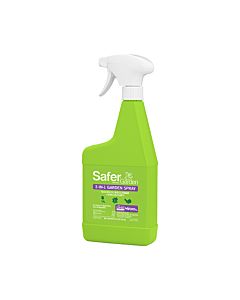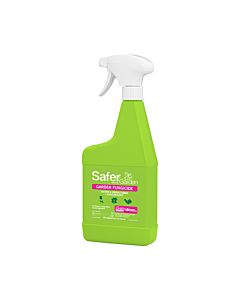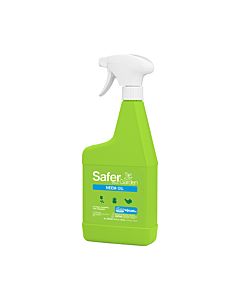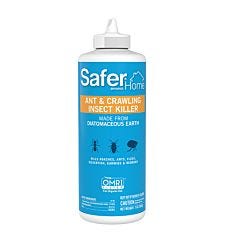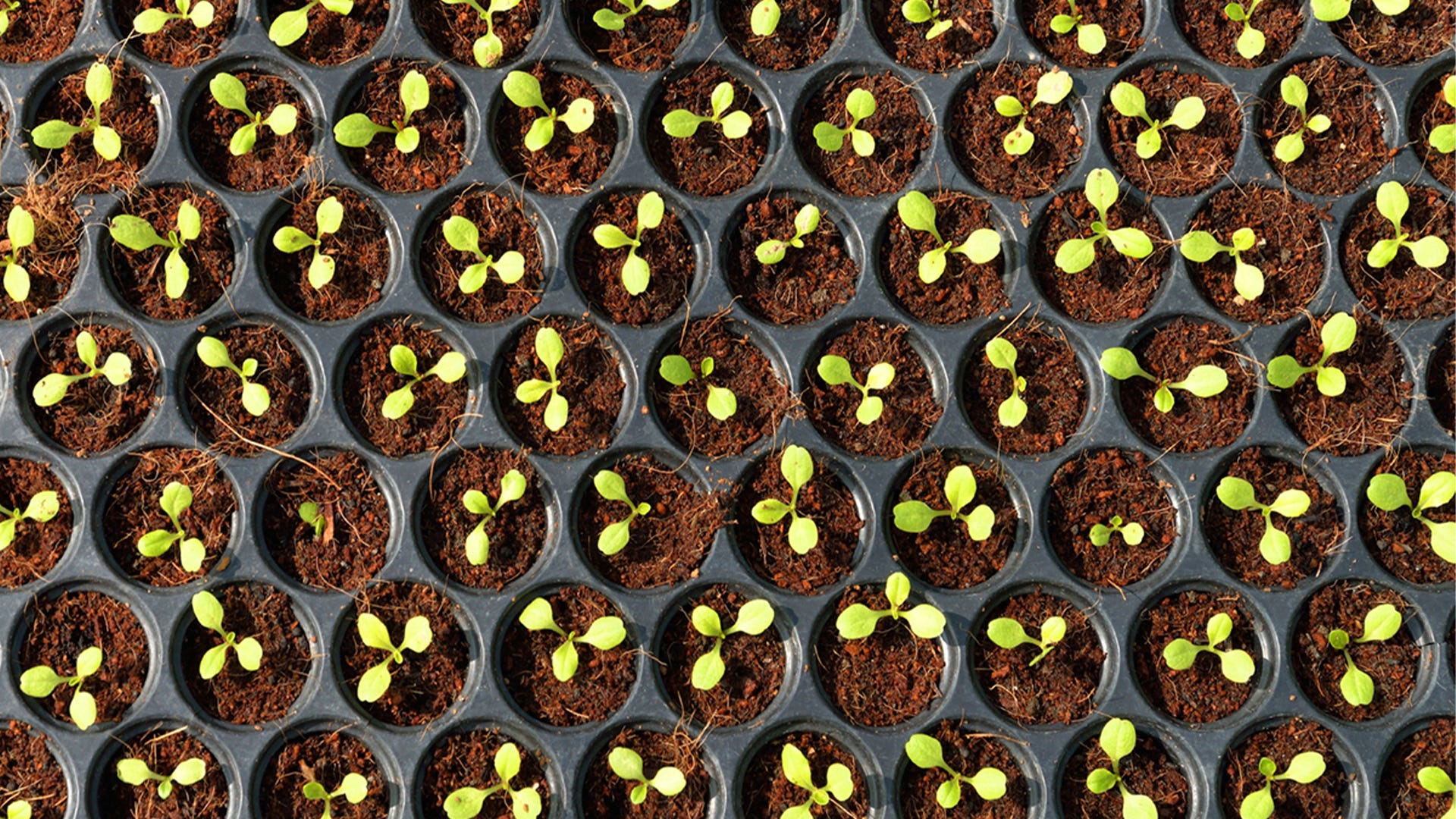
Your indoor garden is never more vulnerable than in the first few weeks after you plant. Whether you start with seeds or clones, the tender seedlings can suffer from overheating, underfeeding, and lethal fungi. Check on your little plants every day and when you see any of these symptoms, take quick action to fix the problem and keep your crop growing strong. Looking for more gardening information? Check out our Organic Gardening 101 for more tips.
We have compiled a list of the 10 most common seedling problems and solutions below.
- Seeds don't come up
- Seed coat stuck
- All seedlings die suddenly
- Long, spindly stems and tiny leaves
- Droopy leaves and stems
- Curled, crumbly leaves
- Yellow or brown leaf tips
- Stalled growth, pale or yellow-streaked leaves
- Purplish or reddish leaves
- Yellow spots or black mold
Seedling Problem No. 1
Seeds don't come up
Cause: About 90 percent of fresh seeds should sprout, but after six months or more in storage, germination rates can begin to decline. If you get low germination with fresh seeds, your soil mix may have dried out before the tiny sprout could take up enough moisture to start growing.
Solution: Before you plant, soak your seeds in water for 30 minutes so the seed coats start to soften and they begin absorbing moisture. Dampen the soil mix thoroughly, and then sow the seeds. After planting, be sure the mix stays consistently moist. Even a few dry hours can stall the sprouts' growth.
Seedling Problem No. 2
Seed coat stuck
Cause: When the outer shell of seeds stays on top of or around the tiny new leaves, you may not have planted them deeply enough in the soil for the sprout to shed the casing before it breaks through the surface. The problem of a stuck seed coat also can occur when the soil is too dry.
Solution: To fix, spritz the casing with water. After waiting a few moments, ease it off with your fingers. Prevent the problem by pushing seeds into the soil to a depth about three times its size--that is, plant a 1-inch seed 3 inches deep. Be sure the soil stays consistently damp while the seed is sprouting.
Seedling Problem No. 3
All seedlings die suddenly
Cause: If a batch of otherwise healthy seedlings fall over and wither seemingly overnight, they are likely victims of damping-off, a fungal disease that attacks stems at the soil surface and is usually deadly. Excess moisture or nutrients create conditions that promote damping-off.
Solution: While it's too late to cure seedlings that are infected with damping-off, you can prevent it. After sowing seeds, sprinkle sphagnum peat moss on top of the soil or other planting medium to absorb moisture. Be sure to feed seedlings with fertilizers formulated for the early stages of growth and follow recommended dilution rates carefully, so there are just enough nutrients to meet the plants' needs and no extra.
Seedling Problem No. 4
Long, spindly stems and tiny leaves
Cause: Seedlings need lots of light as soon as they begin to grow. Artificial lights being much less bright than the sun, seedlings try to stretch toward them when they are too far from the plants' tops tiny leaves.
Solution: If you are using fluorescent or LED lights for your seedlings, set them up so they are about 4 inches from the tops of the plants and raise the lights as they grow. High-intensity lamps should be about 18 inches from the tops of the plants -- any closer and the tender seedlings may burn.
Seedling Problem No. 5
Droopy leaves and stems
Cause: Overwatering plants actually drowns them by depriving the roots of air. When the roots don't get air, the leaves hang down and the stems droop. Excessive water is a common result of growing a small plant in a large pot, because the plant isn't absorbing much moisture each day so the soil in the container stays soggy.
Solution: Never start seeds in potting soil, which holds too much moisture. Instead use a mix containing peat moss or coir (coconut husk fiber). Plant seeds in small containers (4-inch size is the maximum) and be prepared to transplant them to a larger pot as they grow.
Problem No. 6
Curled, crumbly leaves
Cause: Even a few hours without water can slow a seedlings' growth and after a day the plant may begin to curl its leaves to conserve moisture. Hot grow lights and the dry air inside heated homes can rapidly dehydrate plants, too.
Solution: Plant in a mix that includes perlite or vermiculite, naturally occurring minerals that hold moisture and disperse it as needed. Keep the mix consistently damp but not soggy so the plants don't dry out or drown.
Seedling Problem No. 7
Yellow or brown leaf tips
Cause: Warm temperatures (70 to 75 degrees F) are ideal for seed germination, but tender seedlings can overheat from high-intensity lighting, lack of ventilation, or other reasons, causing the foliage to begin to burn at the edges.
Solution: Keep your indoor garden around 65 degrees F while the seedlings are getting established. Leave a fan blowing gently around the seedlings to bring in fresh air and prevent stagnant air from heating up.
Seedling Problem No. 8
Stalled growth, pale or yellow-streaked leaves
Cause: Seeds contain all the nutrients they need to germinate and grow their first pair of leaves, but after that you need to provide the food. When a plant appears to have stopped growing for a few days and the leaves are pale or yellow, it's in need of nitrogen, the critical nutrient for healthy green growth.
Solution: After the two embryonic leaves (known as "cotyledon") appear, begin feeding seedlings with a nitrogen-rich fertilizer for seedlings. Follow the dilution recommendations--excess nutrients that the seedling can't absorb can be a breeding ground for destructive fungi.
Seedling Problem No. 9
Purplish or reddish leaves and stalled growth
Cause: Phosphorus is an essential nutrient for root development and when it is in short supply, the seedlings' growth stops and the veins in leaves can look like they are tinted purple or red.
Solution: Begin fertilizing with a phosphorus-rich nutrient formula after the leaves appear. Test the nutrient solution's pH to be sure it is right for your growing system - soil or hydroponics - because if the fluid is too acidic or alkaline, the seedlings won't be able to absorb the phosphorus.
Seedling Problem No. 10
Yellow spots or black mold on first few sets of leaves
Cause: Whiteflies are common pests of indoor gardens that may prey on weak seedlings. They suck sap from plants, leaving behind yellow spots. Worse, when they suck out more plant juice than they can digest, the pests excrete the excess as a sticky substance (called "honeydew") on leaves. The sooty black mold grows in the honeydew.
Solution: The safest way to protect seedlings is with sticky traps that capture the flies before they can do any damage. When the plants get a little larger, you can eliminate whitefly infestations with insecticidal soap, a spray that's compliant for use in organic gardening.
How to Help Seedlings
Are your seedlings suffering? Or have they already been lost? Tell us about your experiences when you visit Safer® on Facebook where you can join a community of gardeners and hydroponic growers.
For more links to articles like this one, subscribe to the Safer® Brand E-Newsletter which includes special product announcements and helpful tips for your household.

